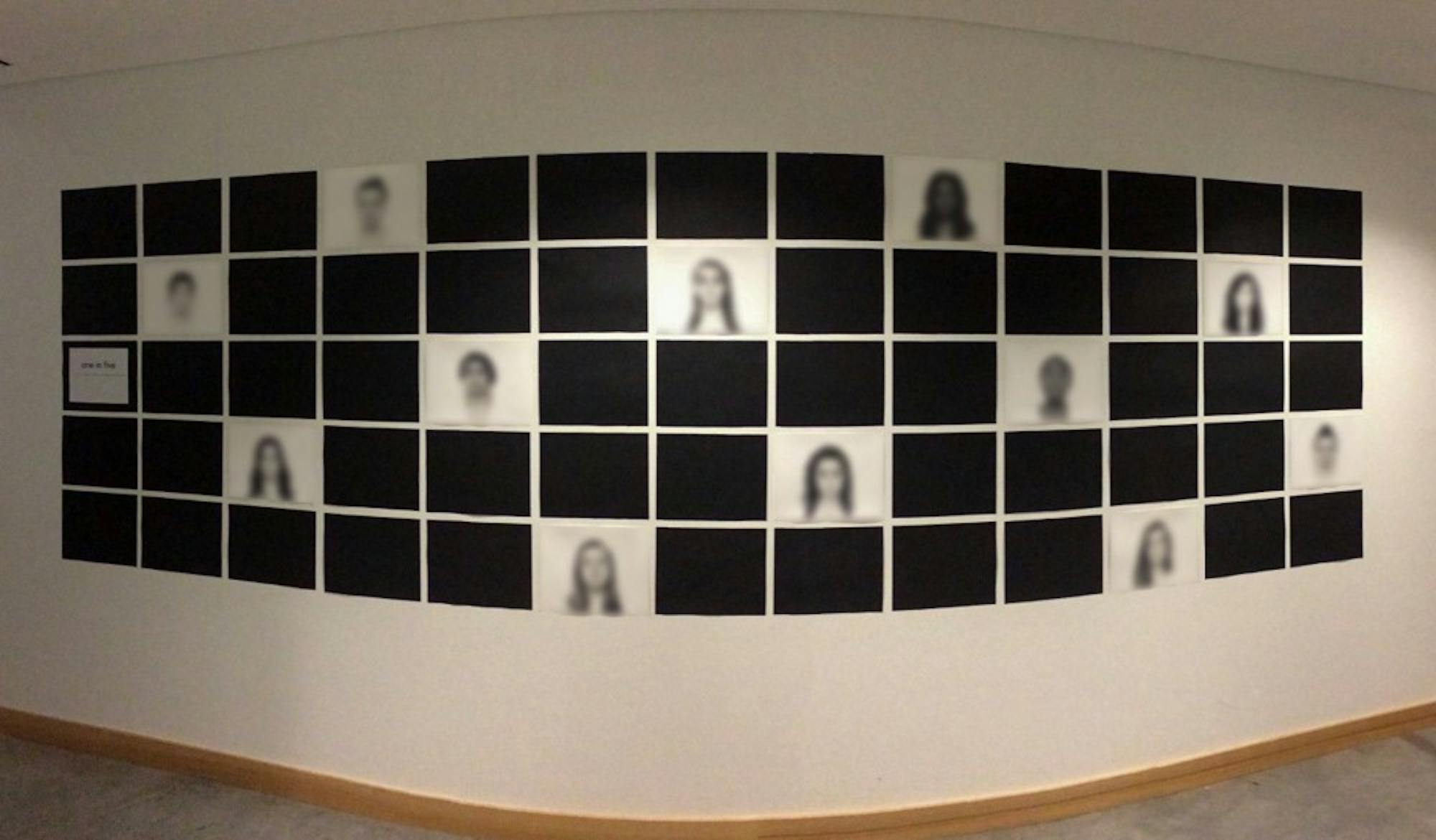One in five women will experience sexual assault during their lifetime. Despite this fact, many people still feel distanced from the idea of sexual assault. Jadyn Petterson-Rae’15 wanted to change this and help more people understand sexual assault and its prevalence in society, so she created an exhibition featuring pictures of Dartmouth women who have experienced sexual assault. The exhibit is currently being displayed in the Black Family Visual Arts Center for Sexual Assault Awareness Month.
Petterson-Rae said she began working on this project during her “Sex, Gender and Society” class, eventually expanding it when she took “Photography I.” She believes that putting faces to the idea of sexual assault can have an extremely powerful impact on increasing awareness of sexual assault, an impact that she has seen firsthand. Petterson-Rae noted that one of her friends was not able to fully understand sexual assault and its effects until he had heard her story.
“It really just made an abstract concept tangible and real,” Petterson-Rae said. “It brought it close to home.”
After this experience, Petterson-Rae realized her project could humanize sexual assault. Petterson-Rae said she hopes that when people see the exhibit, they will be struck both by the number of faces and their recognition of some of the faces.
Francesca Gundrum ’17 said that part of what made her want to be a part of the exhibit is that when she first saw it, she recognized every face on the wall.
“The impact hits you like a ton of bricks,” Gundrum said. “It’s so powerful.”
Once Petterson-Rae had the idea for the exhibition, she reached out to women by emailing sororities through an account she created for the project. She mentioned her experience with sexual assault and then began to talk about her project. She hoped that by talking about her own experience first, women would be more willing to open up to her and step forward.
“It’s asking someone to be in a very vulnerable position, so I felt it was important to be vulnerable first,” Petterson-Rae said.
After she reached out to people, Petterson-Rae said that she received positive responses across the board. Many women were eager and willing to have their faces be displayed for the exhibit. Others said they were not yet ready to talk about it or be displayed, but they were appreciative of her project.
The survivors who came forward in this article all said that they themselves did not have problems talking about their experiences, but they understood that others might not be ready yet.
For some women though, simply displaying their picture was a good way to acknowledge sexual assault without actually talking about it. Petterson-Rae said one woman told her that although she was not ready to talk about her experience with sexual assault, she did not want to be silent anymore.
Gundrum also acknowledged the power of expression that a picture can have.
“It’s not very often that someone who is a victim can nonverbally express what happened to them in such a collective way and in such a powerful way,” Gundrum said.
Petterson-Rae hoped that being featured in the exhibit would help some women start to find their voice and reclaim their experience.
“It’s about the experience of the audience but it’s also about the experience of the women coming forward,” Petterson-Rae said.
All the survivors that came forward to speak said that being part of the exhibit made them think about and process their experiences.
Eva Munday ’16 said that being displayed in Petterson-Rae’s exhibit in addition to her own artwork, which also focuses on sexual assault, helped her cope with her experience.
Ashley Zepeda ’18 said being part of the work along with so many other women made her not only reflect on her own experience but on the prevalence of sexual assault.
“If anything, it made me think of all the other people it’s affected,” Zepeda said.
Gundrum talked about standing in solidarity with other survivors.
“This is me addressing something did happen to me, and I’m okay, and I’m going to be okay, and I’m standing with everyone even if they’re not in the place that I am,” Gundrum said.
Petterson-Rae said she also hopes that women who have experienced sexual assault but did not come forward will find comfort in the exhibit because they will see that they are not alone. Although the exhibit only features women, Petterson-Rae acknowledged that sexual assault can affect anyone.
“That’s been something that I kind of struggled with because I don’t want anyone to feel like their experience is being disregarded by the fact that I’m focusing on this specific group,” Petterson-Rae said.
However, because Petterson-Rae chose to work with the statistic that one in five women will be sexually assaulted at some point in their life, she chose to only exhibit women. In addition, she exclusively featured Dartmouth women. Despite this, she said that the focus is not about sexual assault at Dartmouth but rather about the problem nationwide. Portraying Dartmouth women made it easier for people to connect to the problem because they would recognize people, she said.
Eventually, Petterson-Rae wants to take her project national and possibly display her exhibit at other colleges. However, for those exhibitions she would use faces of women from those colleges as opposed to Dartmouth women so they would have the same effect on those students.
Petterson-Rae said she believes the format of her exhibit humanizes sexual assault by bringing it close to home. Gundrum, Munday and Zepeda all said they hoped the exhibit would allow people to understand the reality of sexual assault and its prevalence by putting faces to the problem.
“The main goal of the project is to start a discussion,” Petterson-Rae said. “Because things won’t change unless they’re talked about.”
Petterson-Rae’s exhibit will be displayed in the BVAC until May 3. If you would like to reach out to her about adding your picture to the exhibit, please contact her at jadynpr@gmail.com.




